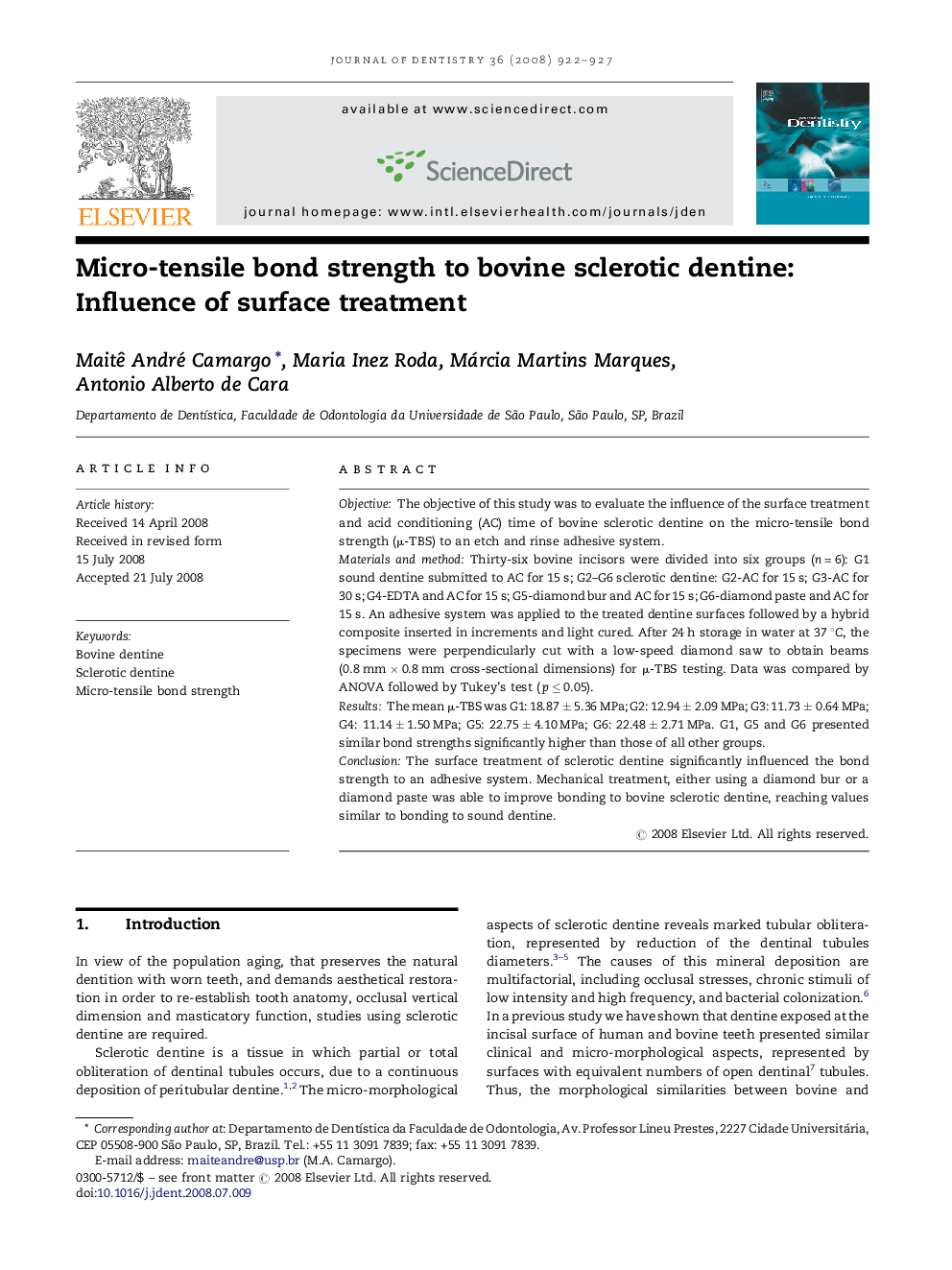| Article ID | Journal | Published Year | Pages | File Type |
|---|---|---|---|---|
| 3146402 | Journal of Dentistry | 2008 | 6 Pages |
ObjectiveThe objective of this study was to evaluate the influence of the surface treatment and acid conditioning (AC) time of bovine sclerotic dentine on the micro-tensile bond strength (μ-TBS) to an etch and rinse adhesive system.Materials and methodThirty-six bovine incisors were divided into six groups (n = 6): G1 sound dentine submitted to AC for 15 s; G2–G6 sclerotic dentine: G2-AC for 15 s; G3-AC for 30 s; G4-EDTA and AC for 15 s; G5-diamond bur and AC for 15 s; G6-diamond paste and AC for 15 s. An adhesive system was applied to the treated dentine surfaces followed by a hybrid composite inserted in increments and light cured. After 24 h storage in water at 37 °C, the specimens were perpendicularly cut with a low-speed diamond saw to obtain beams (0.8 mm × 0.8 mm cross-sectional dimensions) for μ-TBS testing. Data was compared by ANOVA followed by Tukey's test (p ≤ 0.05).ResultsThe mean μ-TBS was G1: 18.87 ± 5.36 MPa; G2: 12.94 ± 2.09 MPa; G3: 11.73 ± 0.64 MPa; G4: 11.14 ± 1.50 MPa; G5: 22.75 ± 4.10 MPa; G6: 22.48 ± 2.71 MPa. G1, G5 and G6 presented similar bond strengths significantly higher than those of all other groups.ConclusionThe surface treatment of sclerotic dentine significantly influenced the bond strength to an adhesive system. Mechanical treatment, either using a diamond bur or a diamond paste was able to improve bonding to bovine sclerotic dentine, reaching values similar to bonding to sound dentine.
